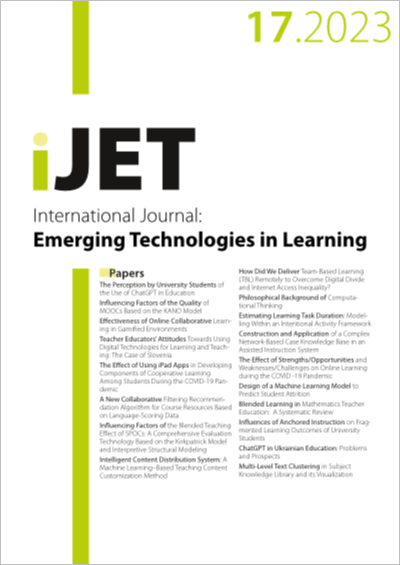Estimating Learning Task Duration
Modelling Within an Intentional Activity Framework
DOI:
https://doi.org/10.3991/ijet.v18i17.41635Keywords:
time on task, actual learning time, engagement, intentionality of action, task complexityAbstract
This paper investigates the problem of estimating optimal task duration. The study specifically focused on e-learning, higher education, language learning and self-study contexts. The problem of duration was approached through secondary analysis that made use of an intentional activity framework. This was supported by a small classroom learning analytic study of mobile multiple-choice intentional duration. The research’s value was exemplified through the further creation of an original model that estimates maximum task duration by deconstructing task complexity within open and distributed learning (ODL) contexts. The model uses six basic building blocks to enable the timing of any given intentional learning task. It will provide organisational clarity to conference presenters, EdTech developers, lecturers, materials designers, and teachers. It can help to predict the phase in the lecture or lesson cycle when well-intentioned learners go off task. It is likely the framework can be applied to broad categories of activity, such as, ODL, sports, traditional education, and the workplace. The study supports both the six-minute e-learning video rule and the ten-minute rule for lectures, providing insight as to why these rules generally seem to be effective. This is the optimisation of engagement and can be applied to any scenario in which engagement is a key metric. In addition, the framework may be beneficial to the field of human activity detection.
Downloads
Published
How to Cite
Issue
Section
License
Copyright (c) 2023 Jason Byrne

This work is licensed under a Creative Commons Attribution 4.0 International License.



